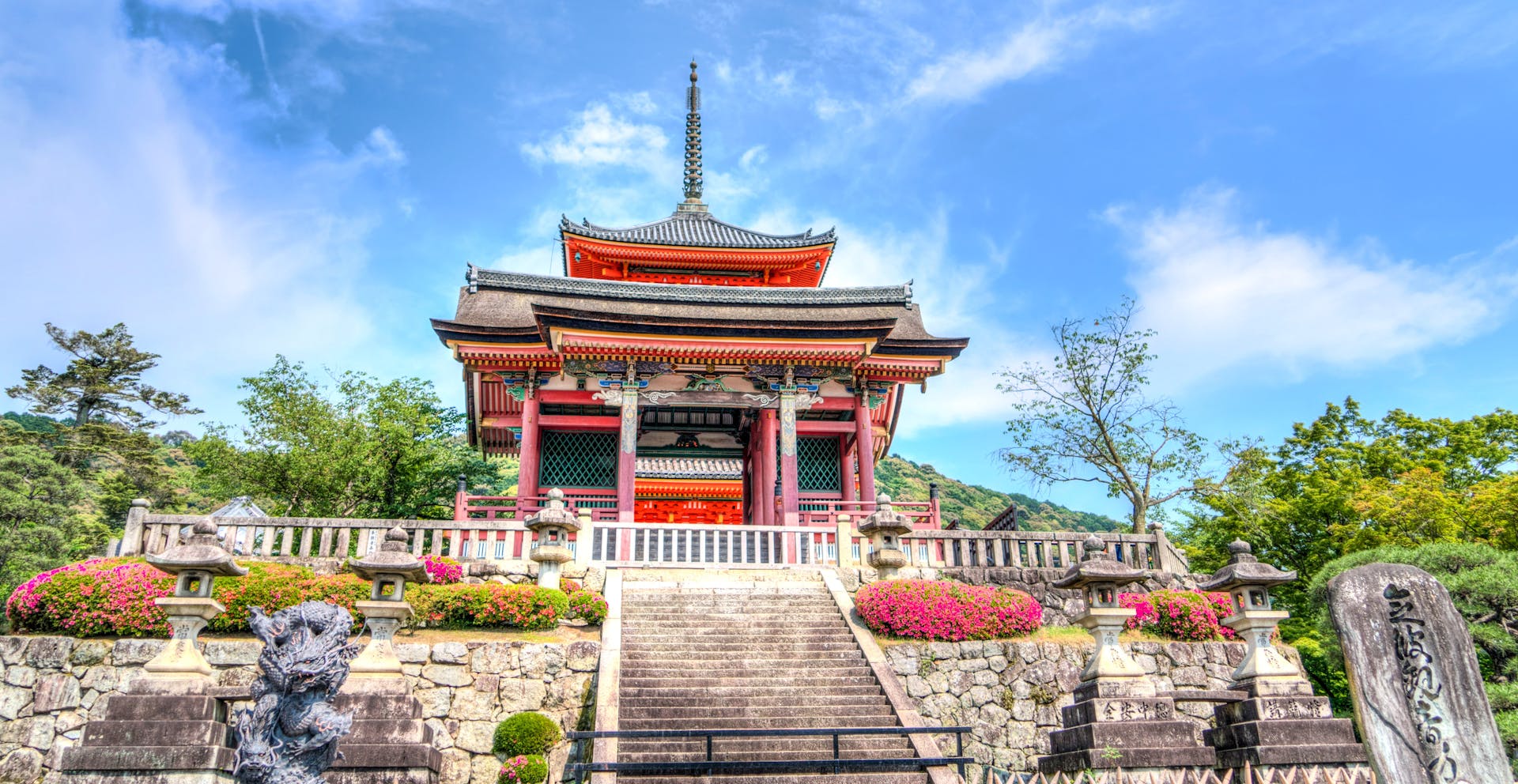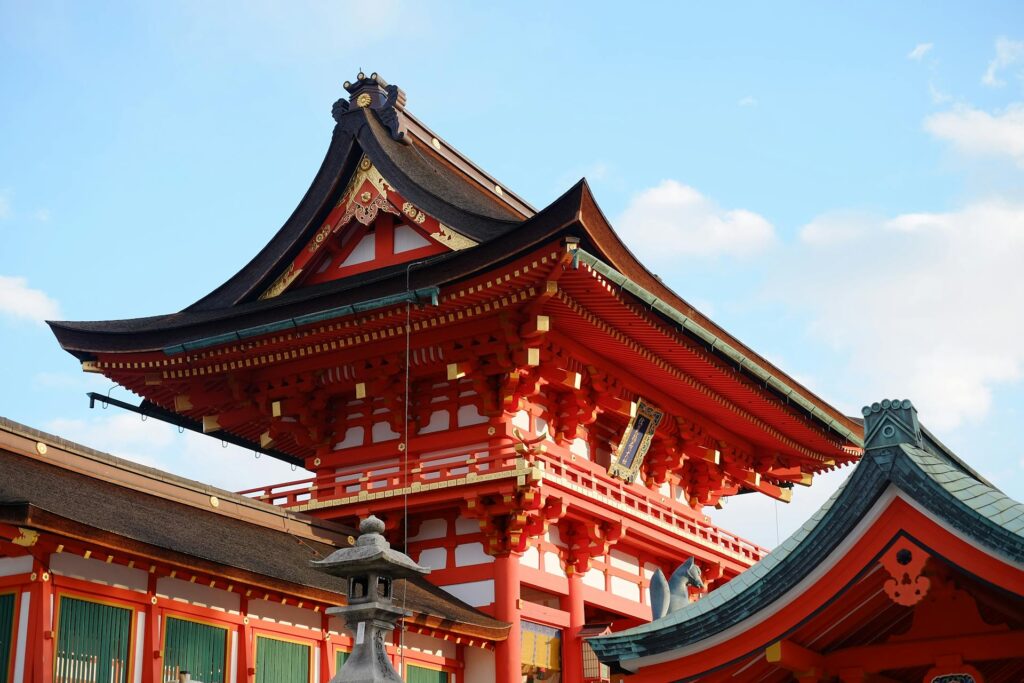Kyoto, the ancient capital of Japan, is a city where time seems to have paused, allowing the whispers of history to reverberate through its streets. Here, the elegance of traditional Japanese design meets the spiritual serenity of centuries-old wooden temples and teahouses. The Kyoto architecture scene is a testament to the city’s dedication to preserving its cultural heritage while subtly integrating modernity. Visitors are often entranced by the harmonious blend of nature and architecture, a balance that encapsulates the essence of Japan itself.
The Essence of Kyoto Architecture
Kyoto architecture is a celebration of simplicity and profound beauty. The city’s wooden temples stand as symbols of tranquility, their structures imbued with spiritual significance. These architectural marvels, such as Kinkaku-ji and Ginkaku-ji, reflect the Zen Buddhist principles that emphasize harmony with nature. The careful craftsmanship and intricate details of these temples are reminiscent of divine buildings that capture the spirit across the world.
The teahouses of Kyoto, or chashitsu, further exemplify this aesthetic. Traditionally used for tea ceremonies, these humble structures are designed to evoke a sense of peace and mindfulness. The architecture of these teahouses often mirrors the natural landscape, with elements like tatami mats, sliding shoji doors, and a minimalist approach that complements the surrounding gardens.
Kinkaku-ji: The Golden Pavilion
Perhaps the most iconic example of Kyoto architecture is Kinkaku-ji, the Golden Pavilion. This Zen Buddhist temple is renowned for its striking gold leaf exterior, which reflects brilliantly in the surrounding pond, creating a mirror image that enhances its ethereal beauty. Situated amidst lush gardens, Kinkaku-ji represents the perfect fusion of human craftsmanship and natural splendor.
The history of Kinkaku-ji is as captivating as its architecture. Originally built in the 14th century as a retirement villa for shogun Ashikaga Yoshimitsu, it was later converted into a temple. Despite suffering destruction and reconstruction, the temple remains a symbol of Kyoto’s resilience and dedication to preserving its architectural heritage, much like the architectural wonders of the 21st century that blend modernity with tradition.
Ginkaku-ji: The Silver Pavilion
Ginkaku-ji, or the Silver Pavilion, offers a more understated yet equally enchanting example of Kyoto architecture. Unlike its golden counterpart, Ginkaku-ji’s beauty lies in its simplicity and the subtlety of its design. Though it was intended to be covered in silver foil, this plan was never realized, which only adds to its charm and historical narrative.
The Silver Pavilion is set within a meticulously designed garden, embodying the Japanese concept of wabi-sabi, which finds beauty in imperfection and transience. This philosophy is echoed in the architecture of Paris, where historical buildings are celebrated for their aged elegance and storied pasts. Ginkaku-ji stands as a testament to the enduring allure of simplicity and the artistry of Kyoto architecture.
The Role of Zen Buddhism
Zen Buddhism has played a crucial role in shaping Kyoto architecture. The principles of Zen have influenced the design of many temples and gardens, emphasizing simplicity, austerity, and a deep connection to nature. The Zen gardens of Kyoto, with their meticulously raked gravel and strategically placed rocks, are designed to inspire meditation and reflection.
This spiritual approach to architecture can be compared to the design of the Sheikh Zayed Mosque, where religious principles guide architectural decisions to create spaces that inspire awe and contemplation. The wooden temples and teahouses of Kyoto continue to serve as places of spiritual refuge, embodying the meditative essence of Zen.
The Art of the Tea Ceremony
The Japanese tea ceremony, or chanoyu, is intrinsically linked to Kyoto architecture. The chashitsu, or tea houses, are designed to facilitate this ritual, with every element carefully considered to enhance the experience. The architecture of these spaces reflects the principles of harmony, respect, purity, and tranquility that underpin the ceremony.
The tea ceremony is more than a mere social gathering; it is an art form that emphasizes mindfulness and appreciation of the present moment. This philosophy is mirrored in the evolution of architectural styles from ancient to modern times, where the focus has shifted from grandeur to creating spaces that nurture the human spirit.
Nijo Castle: A Glimpse into Samurai Culture
Nijo Castle is another architectural gem that offers insight into the samurai culture of feudal Japan. Built in the early 17th century, this castle is a blend of traditional Japanese design and elements of fortification. The architecture of Nijo Castle reflects the power and influence of the Tokugawa shogunate, with its impressive gates, intricate interiors, and sprawling gardens.
Walking through Nijo Castle transports visitors to a time when samurai roamed its halls, much like the historical journey one might experience in the architecture of St. Petersburg, where every building tells a story of its imperial past. The preservation of such sites in Kyoto highlights the city’s commitment to maintaining its cultural and architectural legacy.
The Philosophical Path: A Scenic Stroll
The Philosopher’s Path is a picturesque walkway that offers a unique perspective on Kyoto architecture. This stone path, lined with cherry blossom trees, follows a canal and passes by some of Kyoto’s most famous temples, including Nanzen-ji and Eikan-do. The path is named after the philosopher Nishida Kitaro, who was said to walk this route in meditation.
As one strolls along the Philosopher’s Path, the serene beauty of Kyoto architecture unfolds, inviting contemplation and appreciation of the natural world. This harmonious integration of architecture and nature is reminiscent of the las Lajas Sanctuary, where the church’s design complements its breathtaking surroundings.

Nanzen-ji: An Architectural Masterpiece
Nanzen-ji is one of Kyoto’s most important Zen temples, renowned for its grand Sanmon gate and stunning rock gardens. The architecture of Nanzen-ji reflects the temple’s status and spiritual significance, with its spacious grounds and beautifully crafted buildings that embody the principles of Zen.
The temple’s aqueduct is a striking feature that demonstrates the adaptability of Kyoto architecture, where traditional design coexists with functional infrastructure. This blend of beauty and practicality is a hallmark of Japanese design, similar to the architectural achievements seen in the Sagrada Familia, where artistry and functionality intertwine seamlessly.
The Influence of Nature
Nature is a central theme in Kyoto architecture, influencing everything from the layout of gardens to the materials used in construction. The wooden structures of Kyoto’s temples and teahouses are designed to age gracefully, blending with the natural landscape over time. This harmonious relationship between architecture and nature is a reflection of the Japanese aesthetic philosophy.
Incorporating nature into architecture is not unique to Kyoto. The design of St. Peter’s Basilica, for example, utilizes natural light and open spaces to create a sense of connection to the divine. Similarly, Kyoto architecture uses natural elements to evoke a sense of peace and unity with the environment.
The Preservation of Tradition
Preserving tradition is a fundamental aspect of Kyoto architecture. The city is home to countless structures that have been carefully maintained and restored, ensuring that the architectural heritage of Kyoto is passed down through generations. This commitment to preservation extends beyond buildings to include cultural practices such as the tea ceremony and traditional craftsmanship.
The challenges of modern architecture often involve balancing innovation with respect for historical context, as discussed in the problem with modern architecture. Kyoto serves as a model for how cities can honor their past while embracing the future, maintaining the delicate balance between tradition and progress.
The Role of Craftsmanship
Craftsmanship is at the heart of Kyoto architecture, with artisans dedicating their skills to creating structures that are both functional and beautiful. The intricate woodwork, delicate paper screens, and precise joinery found in Kyoto’s temples and teahouses are a testament to the artistry and dedication of Japanese craftsmen.
This focus on craftsmanship can be compared to the church building interior designs, where attention to detail and skilled workmanship create spaces that inspire awe and reverence. In Kyoto, the legacy of craftsmanship continues to shape the city’s architectural landscape, preserving the techniques and traditions that define its unique character.
The Spiritual Significance of Gardens
Gardens play a vital role in Kyoto architecture, serving as extensions of the spiritual and aesthetic qualities of temples and teahouses. These meticulously designed landscapes are crafted to inspire reflection and meditation, with elements such as water features, carefully placed rocks, and seasonal plants that change with the passing months.
The spiritual significance of Kyoto’s gardens is mirrored in the design of other religious sites, such as the architecture of Christian buildings, where gardens often symbolize paradise and tranquility. In Kyoto, these gardens are integral to the architectural experience, enhancing the sense of serenity and connection to nature.
Modern Influences and Innovations
While Kyoto is renowned for its historical architecture, the city is not immune to modern influences and innovations. Contemporary architects in Kyoto are finding ways to integrate modern design elements with traditional aesthetics, creating new structures that respect the city’s rich heritage while addressing the needs of a modern society.
This delicate balance between old and new is a challenge faced by many cities, as seen in the Zurich architecture, where modern buildings coexist with historical landmarks. In Kyoto, architects are continually exploring innovative approaches to design, ensuring that the city’s architectural legacy remains vibrant and relevant.
The Cultural Impact of Kyoto Architecture
Kyoto architecture has a profound cultural impact, influencing design and aesthetics far beyond Japan’s borders. The principles of simplicity, harmony, and respect for nature that define Kyoto’s architectural style have inspired architects and designers worldwide, leading to a renewed appreciation for traditional craftsmanship and sustainable design.
The global influence of Kyoto architecture is evident in various architectural styles, as explored in the evolution of architectural styles from ancient to modern times. By embracing its cultural heritage, Kyoto continues to inspire and shape the future of architecture, demonstrating the timeless appeal of its architectural traditions.
Conclusion
The timeless tranquility of Kyoto architecture lies in its ability to connect the past with the present, creating spaces that celebrate the beauty of simplicity and the harmony of nature. From the golden splendor of Kinkaku-ji to the serene gardens of Nanzen-ji, Kyoto’s wooden temples and teahouses offer a glimpse into a world where architecture is not just about buildings, but about creating environments that nurture the soul. As we wander through Kyoto’s historical sites, we are reminded of the enduring power of architecture to inspire, comfort, and transcend time.

Recent Posts
15 Floor Plan Graphic Styles That Will Elevate Your Presentation Game
The Role of Shadows in Architectural Storytelling
When Furniture Becomes Architecture: Blurring the Line